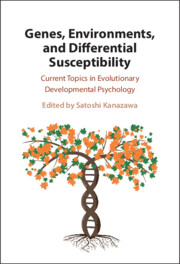 Genes, Environments, and Differential Susceptibility
Genes, Environments, and Differential Susceptibility Book contents
- Genes, Environments, and Differential Susceptibility
- Genes, Environments, and Differential Susceptibility
- Copyright page
- Contents
- Figures
- Tables
- Contributors
- Introduction
- Part I Historical Background and Theoretical Foundations of Jay Belsky’s Work in Evolutionary Developmental Psychology
- Part II Parent–Child Relations and Attachment
- Chapter 4 Evolutionary Lifespan Models of Attachment and Reproductive Strategies
- Chapter 5 Stability and Change in Attachment from Preschool to Adolescence
- Chapter 6 The Legacy of the Determinants of Parenting Process Model
- Part III Life-Course Development from Prenatal Environment through Childhood to Adulthood
- Part IV Differential Susceptibility to Environmental Influences
- Conclusion
- Afterword
- Biography of Jay Belsky
- Index
- References
Chapter 4 - Evolutionary Lifespan Models of Attachment and Reproductive Strategies
from Part II - Parent–Child Relations and Attachment
Published online by Cambridge University Press: 04 September 2025
- Genes, Environments, and Differential Susceptibility
- Genes, Environments, and Differential Susceptibility
- Copyright page
- Contents
- Figures
- Tables
- Contributors
- Introduction
- Part I Historical Background and Theoretical Foundations of Jay Belsky’s Work in Evolutionary Developmental Psychology
- Part II Parent–Child Relations and Attachment
- Chapter 4 Evolutionary Lifespan Models of Attachment and Reproductive Strategies
- Chapter 5 Stability and Change in Attachment from Preschool to Adolescence
- Chapter 6 The Legacy of the Determinants of Parenting Process Model
- Part III Life-Course Development from Prenatal Environment through Childhood to Adulthood
- Part IV Differential Susceptibility to Environmental Influences
- Conclusion
- Afterword
- Biography of Jay Belsky
- Index
- References
Summary
This chapter considers the role of individual differences in attachment in the development of alternative reproductive strategies as conceptualized in evolutionary lifespan models, with a special emphasis on psychosocial acceleration theory (Belsky et al., 1991). Psychosocial acceleration theory is the primogenitor of several evolutionary lifespan models based on life history theory principles. These models describe how harsh and/or unpredictable childhoods forecast developmental adaptations and reproductive strategies in adulthood. Harshness and unpredictability levels should affect the adaptive calibration of the mating–parenting tradeoff, with harsher or more unpredictable environments forecasting greater mating effort at the expense of parenting effort. The attachment system has been proposed as an important mediator between early environmental exposure and reproductive strategies in adulthood. This chapter provides an overview of evolutionary lifespan models through the years and presents the theoretical rationale for the mediating role of attachment representations. This chapter then reviews empirical findings demonstrating that insecure attachment representations mediate the effects of childhood unpredictability on mating and parenting outcomes in adulthood, including unrestricted sociosexuality, unprotected sex, intimate partner violence perpetration, low relationship quality, negating parental orientations, and low parental support. This chapter concludes with directions for future research on environmentally induced adaptive calibration of life history variables.
Keywords
Information
- Type
- Chapter
- Information
- Genes, Environments, and Differential SusceptibilityCurrent Topics in Evolutionary Developmental Psychology, pp. 83 - 99Publisher: Cambridge University PressPrint publication year: 2025
References
Accessibility standard: WCAG 2.0 A
Why this information is here
This section outlines the accessibility features of this content - including support for screen readers, full keyboard navigation and high-contrast display options. This may not be relevant for you.Accessibility Information
Content Navigation
Allows you to navigate directly to chapters, sections, or non‐text items through a linked table of contents, reducing the need for extensive scrolling.
Provides an interactive index, letting you go straight to where a term or subject appears in the text without manual searching.
Reading Order & Textual Equivalents
You will encounter all content (including footnotes, captions, etc.) in a clear, sequential flow, making it easier to follow with assistive tools like screen readers.
You get concise descriptions (for images, charts, or media clips), ensuring you do not miss crucial information when visual or audio elements are not accessible.
You get more than just short alt text: you have comprehensive text equivalents, transcripts, captions, or audio descriptions for substantial non‐text content, which is especially helpful for complex visuals or multimedia.
Visual Accessibility
You will still understand key ideas or prompts without relying solely on colour, which is especially helpful if you have colour vision deficiencies.
You benefit from high‐contrast text, which improves legibility if you have low vision or if you are reading in less‐than‐ideal lighting conditions.